A new 2017 Kawasaki KX250F is set to challenge for 250cc motocross-class supremacy.
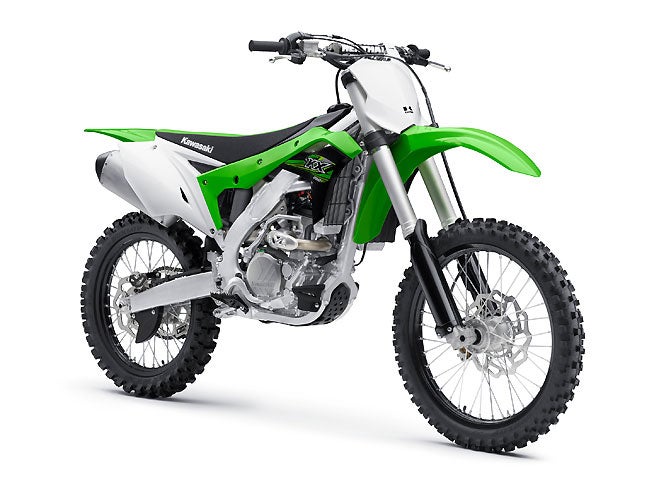
After redesigning its flagship KX450F in 2016, Kawasaki turned attention toward updating its KX250F for 2017, giving the quarter-liter machine a new engine, a new chassis and a host of other changes for increased power, improved suspension and a slimmer feel.
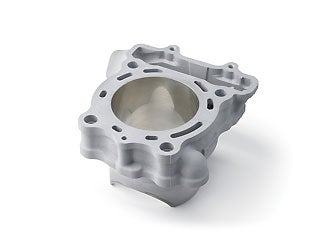 The 2017 KX250F’s 249cc, liquid-cooled, fuel-injected, DOHC, four-valve Single now boasts a more forward-leaning offset cylinder layout to reduce parasitic drag by minimizing piston sidewall thrust for easier power production. Kawasaki engineers also lightened the 250’s bridged-box bottom piston. A new downdraft-style intake layout and injector angle was also incorporated into the bike’s Digital Fuel-Injection (DFI) system, which uses a new 43mm Keihin throttle body with dual injectors. The downstream injector now has twice as many holes to spray finer fuel droplets at a wider angle. The result, says Kawasaki, is stronger low-to-mid power and improved throttle response. Kawasaki also fitted the KX250F’s connecting rod plain bearing instead of a needle bearing and revised the camshaft sprockets and chain as well as changing the exhaust camshaft specs. Kawasaki also fitted a new exhaust system to the 2017 KX250F. The exhaust header pipe is skinnier and shorter, which is claimed to result in improved performance.
The 2017 KX250F’s 249cc, liquid-cooled, fuel-injected, DOHC, four-valve Single now boasts a more forward-leaning offset cylinder layout to reduce parasitic drag by minimizing piston sidewall thrust for easier power production. Kawasaki engineers also lightened the 250’s bridged-box bottom piston. A new downdraft-style intake layout and injector angle was also incorporated into the bike’s Digital Fuel-Injection (DFI) system, which uses a new 43mm Keihin throttle body with dual injectors. The downstream injector now has twice as many holes to spray finer fuel droplets at a wider angle. The result, says Kawasaki, is stronger low-to-mid power and improved throttle response. Kawasaki also fitted the KX250F’s connecting rod plain bearing instead of a needle bearing and revised the camshaft sprockets and chain as well as changing the exhaust camshaft specs. Kawasaki also fitted a new exhaust system to the 2017 KX250F. The exhaust header pipe is skinnier and shorter, which is claimed to result in improved performance.
The 2017 KX250F’s lightweight ECU, which boasts a launch-control feature that Kawasaki introduced to the industry, has also been revised via new settings. The ECU offers three engine maps that come pre-loaded into the unit, and the mapping can be changed by swapping DFI coupling plug. The KX250F is sold with three color-coded couplers tuned for hard, medium or soft track surfaces, and allow riders to find the perfect power delivery for a particular terrain. The ECU mapping can also be customized by using the Kawasaki’s accessory handheld KX FI Calibration Kit, which allows the rider to store and select from up to seven separate engine maps. The unit easily plugs into an additional harness not included in the kit.
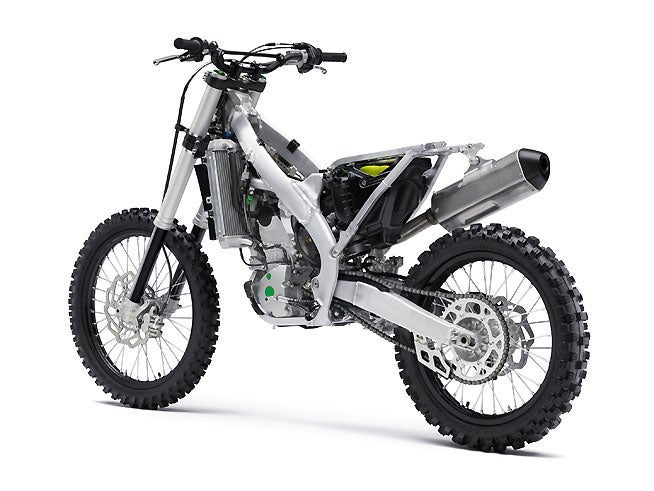
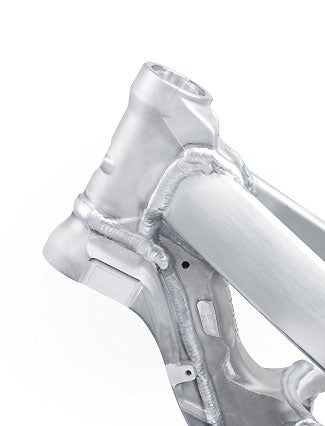 Kawasaki wanted to shave weight off the 2017 KX250F as well as giving it more power, so the 250F now has a new, lighter and more rigid aluminum perimeter chassis that is also narrower than the previous design. The new chassis incorporates a new front downtube and 3mm narrower main beams to reduce its overall width by 6mm. Kawasaki claims that the 2017 KX250F weighs just 229 pounds.
Kawasaki wanted to shave weight off the 2017 KX250F as well as giving it more power, so the 250F now has a new, lighter and more rigid aluminum perimeter chassis that is also narrower than the previous design. The new chassis incorporates a new front downtube and 3mm narrower main beams to reduce its overall width by 6mm. Kawasaki claims that the 2017 KX250F weighs just 229 pounds.
The 2017 KX250F also features revised suspension settings front and rear. Leading the charge is Kawasaki’s Showa 48mm Separate Function Front Fork (SFF Type 2), which locates its damping assembly in the left fork tube and a coil spring in the right. Revised settings contribute to greater stability over braking bumps and through corners. Front suspension travel remains at 12.2 inches.
Out back, the 2017 KX250F’s Uni-Trak rear suspension features revised linkage geometry and revised ratios for better cornering stability. The linkage mounts have been placed below the swingarm to maximize the KX250F’s 12.2 inches of rear travel. The KX’s Showa piggyback shock also features revised valve settings intended to provide a better ride feel, better traction and better feedback. Kawasaki fitted the shock with a lighter spring to shave weight from the overall package. Kawasaki says that the lighter rear suspension weight also helps reduce the pitching effect felt over braking bumps. The shock still features dual compression adjuster for high- and low-speed adjustability. A self-lubricating alumite coating on the inner shock body is also used to improve wear resistance and keep the shock action smooth.
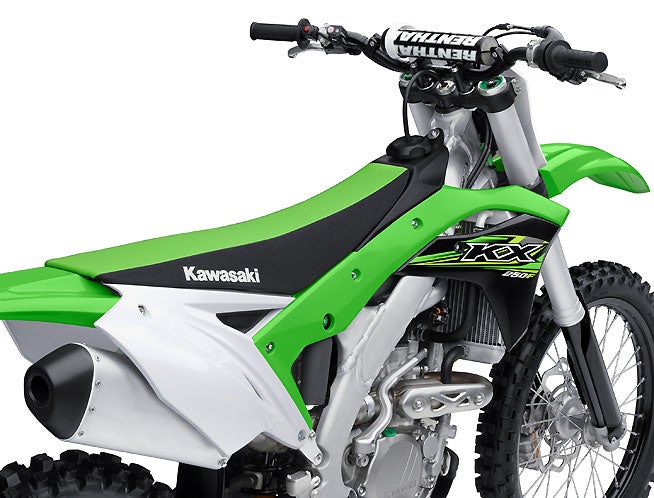
Like its KX450F sister, the 2017 KX250F’s bodywork now features a slimmer profile, thanks revised radiators that are angled to hug the chassis more closely, which also allows for the new radiator shrouds to be tucked in tighter. The KX250F also receives a new 1.69-gallon fuel tank that is flatter than the previous tank, along with a new flatter seat with reinforcing ribs. The ergonomic design gave the 2016 KX450F an amazingly light and roomy feel, so there’s little doubt that it will do the same for the 2017 KX250F.
The KX250F also receives all-new bodywork front to rear, to give it a more compact appearance. Accents include Kawasaki’s first in-mold graphics on the radiator shrouds, black Excel rims, black fork guards, and green highlights.
For more information on the 2017 Kawasaki KX250F, visit www.kawasaki.com.
 Your Privacy Choices
Your Privacy Choices